Occupational Safety Training for Operating Filling Machines
99,000 ₫
Note: The above price is calculated per person and may vary depending on the number of participants in the course and market fluctuations. For more accurate pricing information, please refer to the price list or contact our consulting staff directly.
Occupational safety is an important issue when operating filling machines and needs to be addressed promptly to ensure the health and safety of workers as well as to enhance the reputation of businesses here. The Occupational Safety Training is one of the effective solutions to raise awareness on how to prevent workplace accidents for workers operating filling machines.
Table of Contents
Toggle1. Overview of Filling Machines
a. What is a Filling Machine?
A filling machine is an industrial device used to fill containers or bottles with liquids, powders, or other solid materials. These machines are essential in the food processing, beverage, pharmaceutical, and other industries where accurate and efficient filling is required.
Common types of filling machines:
- Automatic filling machines: Perform the entire filling process without human intervention. The machine automatically moves bottles to required positions, fills, and caps them.
- Semi-automatic filling machines: Designed to reduce manual labor but still require operator involvement in certain steps, such as placing bottles in the machine and removing them after filling.
- Pressure filling machines: Use pressure to push liquid into containers. Typically used for products with low to medium viscosity.
- Volume filling machines: Deliver precise liquid amounts using metering mechanisms such as piston or diaphragm pumps.
- Vacuum filling machines: Use vacuum to draw liquid into containers, often applied for air-sensitive or high-viscosity products.

b. Operating Principles of Filling Machines
Pressure Principle
Pressure filling machines operate by generating pressure to push liquid into containers. This process generally involves:
- Liquid intake: Liquid is introduced into the machine’s tank or reservoir.
- Pressure generation: A pressure mechanism (usually a pump or compressor) creates pressure to push liquid through the pipes.
- Filling: Liquid is pushed out through the filling nozzle into the container.
- Filling volume adjustment: Mechanisms allow control over the amount of liquid filled into the container.
Gravity Principle
Gravity filling machines use gravity to pour liquid into containers:
- Liquid intake: Liquid is stored in a tank positioned higher than the container.
- Container filling: Liquid flows down through the filling nozzle into the container by gravity.
- Filling volume adjustment: Valves or control mechanisms regulate the liquid volume.
Pump Principle
Pump filling machines use various pumps to meter and transfer liquid into containers:
- Piston pump: Pushes liquid from the reservoir by moving a piston.
- Diaphragm pump: Uses a moving diaphragm to pump liquid.
- Vortex pump: Uses swirling force to propel liquid outward.
Vacuum Principle
Vacuum filling machines use vacuum to suck liquid into containers:
- Vacuum creation: The machine creates a vacuum inside the container or liquid chamber.
- Liquid suction: Liquid is drawn into the container due to pressure differences inside and outside.
- Filling volume adjustment: Valves or metering mechanisms control the liquid volume.
Metering Principle
Volume filling machines use metering mechanisms to ensure precise filling:
- Piston metering: Piston pumps deliver a fixed amount of liquid into the container.
- Diaphragm metering: Diaphragm pumps draw and push a fixed liquid volume.
- Valve metering: Flow control valves regulate liquid volume to achieve desired fill amounts.

c. Industries Using Filling Machines
Food and Beverage Industry
- Beverages: Filling machines are used for bottling water, juices, soda, and other drinks.
- Dairy products: Packaging milk, yogurt, cream, and other dairy products.
- Cooking oils and spices: Filling cooking oils, vinegar, sauces, and spices into bottles or cans.
- Canned foods: Filling soups, beans, and ready-to-eat meals.
Pharmaceutical Industry
- Liquid medicines: Bottling liquid medicines, syrups, and injectables.
- Essential oils and supplements: Filling essential oils, vitamins, and supplements into small containers.
- Medical solutions: Packaging medical solutions, injectables, and healthcare products.
Cosmetics Industry
- Creams and lotions: Packaging skincare products such as creams, lotions, and serums into jars or bottles.
- Perfumes: Filling perfumes into glass or plastic bottles.
- Hair care products: Packaging shampoos, conditioners, and other hair care products.
Chemical Industry
- Cleaning agents: Filling household and industrial cleaning products into bottles or cans.
- Industrial chemicals: Packaging industrial chemicals, cleaners, and similar products.
- Paints and coatings: Filling paints, coatings, and other chemical products.
Agriculture Industry
- Liquid fertilizers: Packaging liquid fertilizers and plant care products.
- Pesticides: Filling pesticides and crop protection products into containers.
Functional Food Industry
- Functional products: Packaging functional foods in liquid or powder forms.
Energy Industry
- Oils and fuels: Filling engine oils, fuels, and related products into containers or tanks.
Personal Care Industry
- Body care products: Packaging products like liquid soap, shower gels, and other body care items.
2. Overview of Safety Training for Filling Machine Operation
a. What is Occupational Safety Training?
- Occupational safety training for filling machine operation includes sessions that equip workers with awareness on how to prevent workplace accidents. Those working directly with filling machines belong to group 3.
- The training course helps workers recognize and avoid hazards, reducing risks of workplace accidents during operation.
REGISTER FOR OCCUPATIONAL SAFETY TRAINING SERVICE
b. Training Duration
Initial safety training duration
- The total training time is at least 24 hours, including exam time.
- 8 hours of theoretical study on policies and laws about occupational safety and hygiene.
- 8 hours of theoretical study on basic occupational safety and hygiene knowledge.
- 4 hours of theoretical study on specialized training content.
- 2 hours of practical training on specialized content.
- 2 hours for the final theoretical exam.
The safety training center schedules the sessions based on workers’ availability, typically 6 sessions over 3 days, provided the employer can arrange continuous training time.
Periodic safety training duration
- Before the occupational safety card expires, workers who want to renew must attend periodic occupational safety training, with the duration of periodic training at least 50% of the initial training time.
Explanation: The total periodic training time is at least 12 hours, including exam time. Upon successful completion and passing the test, workers will be reissued or extended their occupational safety cards.
c. Training Content
| No. | TRAINING CONTENT | TRAINING DURATION (HOURS) | |||
| Total | Including | ||||
| Theory | Practice | Test | |||
| I | System of policies and laws on occupational safety and hygiene | 8 | 8 | 0 | 0 |
| 1 | Overview of the system of legal documents on occupational safety and hygiene. | 6 | 6 | ||
| 2 | System of standards and technical regulations on occupational safety and hygiene. | 1 | 1 | ||
| 3 | Specific regulations from state management agencies on occupational safety and hygiene when constructing, expanding, or renovating facilities, and on production, use, storage, and inspection of machines, equipment, materials, and substances with strict safety and hygiene requirements. | 1 | 1 | ||
| II | Basic knowledge of occupational safety and hygiene | 8 | 8 | 0 | 0 |
| 1 | Basic knowledge of hazardous and harmful factors in the workplace. | 4 | 4 | ||
| 2 | Methods to improve working conditions. | 1 | 1 | ||
| 3 | Safety culture in production and business. | 1 | 1 | ||
| 4 | Rights and obligations of employers and employees; policies and regimes on occupational safety and hygiene for workers; functions and duties of safety and hygiene networks. | 1 | 1 | ||
| 5 | Occupational safety and hygiene regulations, safety signs, instructions, use of safety equipment and personal protective equipment; first aid skills for workplace accidents and prevention of occupational diseases. | 1 | 1 | ||
| III | Specialized training content | 6 | 4 | 2 | 0 |
| Comprehensive knowledge of machines, equipment, and substances generating hazardous and harmful factors; analysis, assessment, and risk management on occupational safety and hygiene; safe working procedures with machines, equipment, and substances with strict safety and hygiene requirements. | 6 | 4 | 2 | ||
| IV | Final safety training test | 2 | 2 | 0 | 0 |
| Total | 24 | 22 | 2 | ||
See more about the training content for all 6 groups
d. Occupational Safety Card
After completing the occupational safety training and passing the exam, workers will be issued an occupational safety card (commonly known as occupational safety certificate for group 3).
The group 3 safety card clearly shows information such as full name, date of birth, specific job and work environment, training duration, official stamp, and signature confirming the completion of training.
According to regulations on issuing safety cards stated in Clause 2 of Article 24, Decree 44/2016/ND-CP, there are two cases:
- If there is a labor contract between the employer and employee, the employer must sign, stamp, and certify the safety card for the group 3 trainee after completion of training and passing the exam by the safety training unit.
- If the worker is freelance or temporary without a labor contract, the training unit must sign, stamp, and certify the safety card after the worker completes training and passes the exam.

3. Hazards for Workers When Operating Filling Machines
Mechanical Hazards
- Accidents due to moving mechanisms: Filling machines have moving parts such as conveyors, pistons, valves, and pumps that can be dangerous if not properly guarded.
- Pinching or Impact: Moving parts can pinch or strike workers, causing injuries.
Chemical Hazards
- Chemical Exposure: Filling machines in the chemical industry may handle detergents, solvents, or other hazardous chemicals.
- Liquid Leaks: Leaks or spills can cause direct contact with chemicals.
Electrical Hazards
- Electric Shock: Filling machines contain electrical components, and unsafe contact can cause electric shock.
- Short Circuits: Electrical faults may cause short circuits and fires.
Thermal Hazards
- High Temperature: Some filling machines use heat in processing, which can cause burns or discomfort to workers.
Noise Hazards
- Loud Noise: Filling machines can generate loud noise, harmful to hearing and causing stress.
Slip and Fall Hazards
- Slippery Floors: Spilled or leaked liquids can make floors slippery, increasing fall risk.
Ergonomic Hazards
- Physical Strain: Working with filling machines may require uncomfortable or repetitive postures, leading to musculoskeletal injuries.
Fire and Explosion Hazards
- Fire and Explosion Risks: Flammable chemicals or products can cause fire or explosions if not handled properly.

4. Measures to Control Occupational Accidents When Operating Filling Machines
Safety System Design and Installation
- Mechanical Protection: Install mechanical guards such as covers, protective nets, and shields to prevent workers from direct contact with moving parts.
- Sensors and Alarms: Use sensors to detect faults and automatically stop the machine upon unwanted intervention or incidents. Audio and visual alarms help workers recognize emergencies.
- Ergonomic Design: Design machines and work areas to fit natural working postures and minimize physical strain. Ensure controls are easy to access and use.
- Leak and Fire Prevention: Design machines to minimize liquid leaks and equip with fire prevention measures such as fire-resistant devices and good ventilation systems.
Training and Education
- Safety Training: Provide comprehensive training for workers on safe filling machine operation, including personal protective equipment (PPE) use, hazard identification, and emergency response.
- Operation and Maintenance Instructions: Train workers on proper machine use, regular maintenance, and safety function checks.
- Emergency Response Training: Train staff on how to respond in case of accidents or emergencies.
Periodic Maintenance and Inspection
- Regular Maintenance: Perform regular maintenance to ensure all parts function properly and safety devices are intact.
- Safety System Checks: Frequently inspect safety systems such as sensors, guards, and alarm mechanisms to ensure effectiveness.
Safety Procedures and Policies
- Establish Safety Procedures: Develop clear procedures and policies for operation, maintenance, and machine shutdown. Ensure strict compliance.
- Emergency Procedures: Create and implement emergency procedures for scenarios like fire, chemical leaks, and electrical faults.
Use of Personal Protective Equipment (PPE)
- Gloves and Body Protection: Use protective gloves and body gear to guard against mechanical hazards.
- Goggles and Masks: Use goggles to protect eyes from liquids or flying objects and masks when working with chemicals or dust.
- Ear Protection: Provide earplugs or earmuffs if the filling machine produces loud noise.
Work Environment Control
- Ventilation and Air Supply: Ensure good ventilation to reduce exposure to harmful chemical vapors.
- Cleaning and Waste Management: Keep work areas clean and promptly clean up spills to reduce slip and accident risks.
Risk Monitoring and Evaluation
- Risk Assessment: Conduct periodic risk assessments to identify potential hazards and adjust safety measures as needed.
- Monitoring and Inspection: Monitor safety measures implementation and inspect their effectiveness regularly.
5. Benefits of Occupational Safety Training
An Toàn Nam Việt provides your business with the following great benefits after completing occupational safety training courses according to Decree 44/2016/ND-CP on Occupational Safety and Hygiene for companies, factories, and enterprises.
- Workers can recognize potential occupational accident hazards and take preventive measures to avoid accidents.
- Your business can establish risk prevention measures in production, operation, and maintenance processes.
- Reduce costs associated with safety incidents.
- Uninterrupted production increases labor productivity and product quality.
- Compliance with labor safety laws avoids legal risks.
- Build credibility and professionalism, enhancing your brand value.
Nam Việt’s training courses are solutions to prevent external factors from causing harm to individuals, helping them avoid injuries or worse, fatalities.
REGISTER FOR OCCUPATIONAL SAFETY TRAINING SERVICES
6. Customer Feedback After Completing Training
An Toàn Nam Việt has years of experience accompanying many businesses in Vietnam generally and in southern provinces specifically. This responsibility is invaluable to Nam Việt, so our Occupational Safety Training is increasingly professional. The motivation for our growth comes from positive feedback and suggestions from businesses. Below are testimonials from partners we have served.
Hoa Đất Construction and Trading Joint Stock Company
“Nam Việt’s service helped us greatly in simplifying occupational safety and completing safety documentation for work processes. The consulting team was enthusiastic and timely with our questions. 5 stars for Nam Việt.”
See more customer interviews after using Nam Việt’s services
7. Occupational Safety Training Capacity of An Toàn Nam Việt
An Toàn Nam Việt is a reputable and quality occupational safety training center in Vietnam today. Our training sessions are continuously held at manufacturing workshops, factories, or construction sites across the country (all 63 provinces).
REGISTER FOR OCCUPATIONAL SAFETY TRAINING SERVICES
License for occupational safety training
- An Toàn Nam Việt has been inspected and certified for eligibility to operate occupational safety and hygiene training by the Department of Safety under the Ministry of Labor, Invalids and Social Affairs. This strengthens our capacity in providing occupational safety training.

Materials and Lectures
- Before being used in safety training courses, materials are reviewed and approved to ensure accurate knowledge and effective application.
- Our instructors’ teaching methods are standardized according to An Toàn Nam Việt‘s standards, researched and developed by experts in occupational safety and hygiene training to maximize knowledge absorption.
Facilities
- Controlling factors in the classroom environment enhances teaching efficiency and students’ knowledge absorption.
- Our training facilities include spacious classrooms that meet standards for space, lighting, training equipment, etc.
8. Nationwide Reputable and Quality Safety Training Center
At An Toàn Nam Việt, we always prioritize occupational safety training as a professional passion. For us, imparting self-protection knowledge to workers equips them with safety on their livelihood journey and contributes to nation-building.
To ensure effective training, we meticulously prepare every detail, from tools, teaching equipment to curricula, materials, sound, and lighting.
Our occupational safety trainers are experts with years of experience, including research on hazard identification across industries and preventive measures.
Their lectures are practical and conveyed vividly and understandably to workers. These factors make learners comfortable and facilitate knowledge absorption. Naturally, the content strictly follows Decree 44/2016/ND-CP.
Thus, workers learn many hazard prevention methods and self-protection skills, applying them appropriately in practice.
Our training center proudly offers reputable and professional occupational safety training with these advantages:
- Competitive training costs with guaranteed quality.
- Flexible training schedules fitting company production situations.
- Quick and lawful issuance of occupational safety training certificates.
- Experienced instructors with many years in the field.
- Classrooms controlled for factors enhancing teaching effectiveness and knowledge absorption.
- Courses tailored to occupational safety work at enterprises.
- An Toàn Nam Việt works dedicatedly and professionally to support customers accurately and promptly.

9. Additional Occupational Safety Training Materials
- Occupational safety materials for filling machine operation
- Occupational safety training material set
- Occupational safety training test set
- Occupational safety lecture slides for filling machine operation
- Occupational safety multiple-choice test for filling machine operation
No comments yet

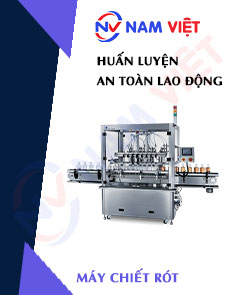

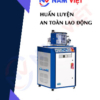




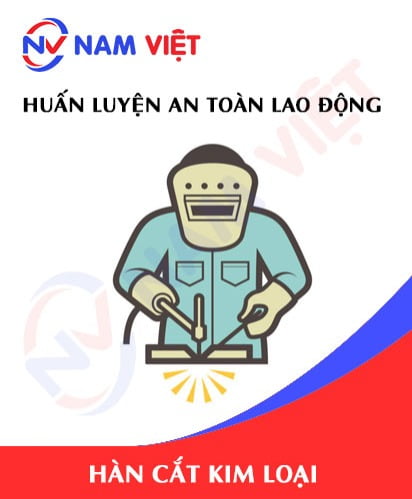

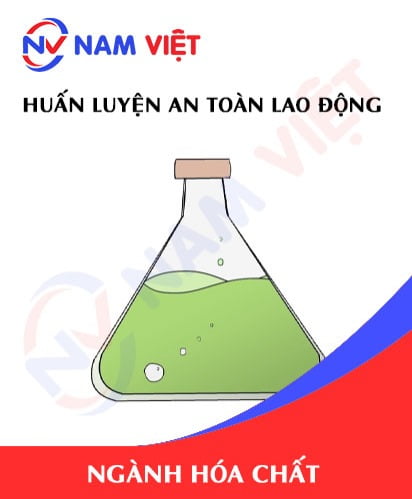
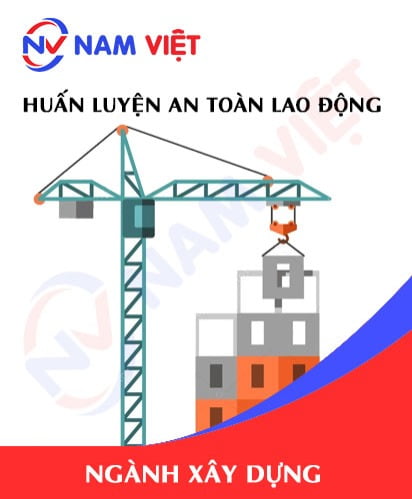


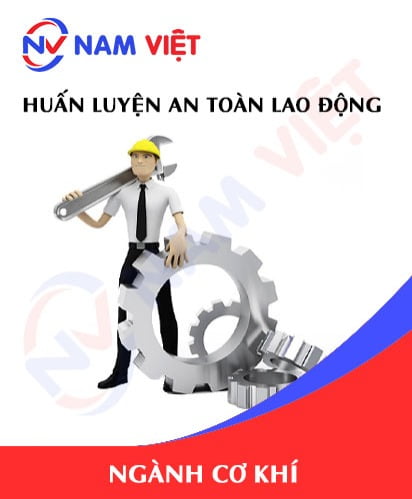
Review Occupational Safety Training for Operating Filling Machines
There are no reviews yet.